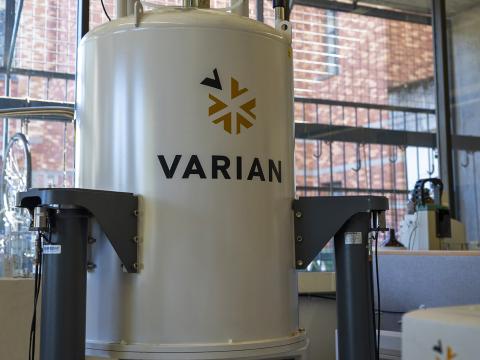Nuclear magnetic resonance (NMR) spectroscopy is achieved by exciting an atom's quantum spin state and examining the energy released during its relaxation. This provides information on the identity and environment of the molecules present. Additionally, the longer relaxation time scale associated with NMR allows for various molecular dynamics and kinetics to be studied.
Due to atomic spin state interactions with molecular electron orbitals, normal solid-state radio frequency absorbances tend to be broad and unanalyzable. Using magic angle spinning solid-state NMR spectroscopy, artificial "molecular tumbling" can be introduced, improving the resolution otherwise associated with solid-state NMR and creating analyzable spectra.
Typical Applications
- Drug polymorph studies
- Solid materials analysis
- Solid dynamic studies
- Insoluble polymer studies
Instruments

- Three RF channels with waveform generators and openVnmrJ
- Variable temperature capabilities
- Automated deuterium (2H) gradient shimming
- Primarily utilized for magic angle spinning (MAS) solid-state NMR spectroscopy
- Varian 5mm AutoX DB probe:
- VT: -80 to +130C
- 1H/19F, X (15N-31P), and 2H lock
- Z-axis pulsed field gradients and ATM
- Phoenix 1.6 mm HXY probe for Solid-State NMR:
- VT: -125 to +125C
- 1H/19F, X (31P-29Si), and Y (23Na-15N)
- Manual tune/match
- Capable of spinning up to 40 kHz MAS
Instrument Contact: Casey Simons
